Resilience of LTE-A/5G-NR Links Against Transient Electromagnetic Interference
Abstract
:1. Introduction
2. Literature Survey
3. Materials and Methods
3.1. Types of Unintentional Interferences
3.2. Testbed Configuration and Parameter Specifications
3.3. Transient Electromagnetic Interference (EMI) and Unintentional Interference
3.4. Key Performance Indicators
3.4.1. Error Vector Magnitude (EVM)
3.4.2. Signal-to-Interference-Plus-Noise Ratio (SINR)
4. Results and Discussions
4.1. Transient EMI in LTE-A
4.2. Transient EMI in 5G-NR
5. Conclusions and Future Scope
Author Contributions
Funding
Institutional Review Board Statement
Informed Consent Statement
Data Availability Statement
Acknowledgments
Conflicts of Interest
References
- de São José, A.; Chopinet, N.; Simon, E.; Deniau, V.; Becuwe, N. Contribution to a Harmonized Test Methodology to Compare Railway Wireless Communication Technologies Under Transient Interference. IEEE Trans. Electromagn. Compat. 2023, 65, 1329–1342. [Google Scholar] [CrossRef]
- de São José, A.; Chopinet, N.; Deniau, V.; Simon, E. Designing a Sequence of Transient EM Signals in Order to Test Railway Wireless Communications Face to EM Interferences Produced by the Poland Catenary-Pantograph Contact. In Proceedings of the 2023 International Symposium on Electromagnetic Compatibility—EMC Europe, Krakow, Poland, 4–8 September 2023; pp. 1–6. [Google Scholar] [CrossRef]
- Fan, Y.; Zhang, L.; Li, K. EMI and IEMI Impacts on the Radio Communication Network of Electrified Railway Systems: A Critical Review. IEEE Trans. Veh. Technol. 2023, 72, 10409–10424. [Google Scholar] [CrossRef]
- Fan, Y.; Zhang, L.; Li, K.; Bao, M.; Lu, M. Deep Learning-based EMI and IEMI Classification in 5G- R High-Speed Rail Wireless Communications. In Proceedings of the 2024 IEEE 99th Vehicular Technology Conference (VTC2024-Spring), Singapore, 24–27 June 2024; pp. 1–6. [Google Scholar] [CrossRef]
- Romero, G. Identication of the Impact Mechanisms of the Electromagnetic Interferences on the Wi-Fi Communications. Ph.D. Thesis, Université de Lille 1 Sciences et Technologies, Villeneuve-d’Ascq, France, 2017. [Google Scholar]
- Deniau, V.; Gransart, C.; Romero, G.L.; Simon, E.P.; Farah, J. IEEE 802.11n Communications in the Presence of Frequency-Sweeping Interference Signals. IEEE Trans. Electromagn. Compat. 2017, 59, 1625–1633. [Google Scholar] [CrossRef]
- Wang, J.; Wang, G.; Zhang, D.; Zhang, J.; Wen, Y. The influence of pantograph arcing radiation disturbance on LTE-R. In Proceedings of the 2019 International Conference on Electromagnetics in Advanced Applications (ICEAA), Granada, Spain, 9–13 September 2019; IEEE: Piscataway, NJ, USA, 2019; pp. 0583–0586. [Google Scholar]
- Stienne, O.; Deniau, V.; Simon, E.P. Assessment of transient EMI impact on LTE communications using EVM & PAPR. IEEE Access 2020, 8, 227304–227312. [Google Scholar]
- Romero, G.; Simon, E.P.; Deniau, V.; Gransart, C.; Kousri, M. Evaluation of an IEEE 802.11n communication system in presence of transient electromagnetic interferences from the pantograph-catenary contact. In Proceedings of the 2017 XXXIInd General Assembly and Scientific Symposium of the International Union of Radio Science (URSI GASS), Montreal, QC, Canada, 19–26 August 2017; pp. 1–4. [Google Scholar] [CrossRef]
- Correia, M.M. Analysis of the Influence of Pantographs in Railway Communications. Master’s Thesis, Instituto Superior Técnico, Lisboa, Portugal, 2019. [Google Scholar]
- Yang, Y.; Cao, H.; Zhang, M.; Su, Z.; Hu, M.; Jin, M.; Liu, S. Research on the Influence of Pantograph Catenary Contact Loss Arcs and Zero-Crossing Stage on Electromagnetic Disturbance in High-Speed Railway. Energies 2023, 17, 138. [Google Scholar] [CrossRef]
- Fu, H.; Wang, X.; Zhang, X.; Saleem, A.; Zheng, G. Analysis of LTE-M Adjacent Channel Interference in Rail Transit. Sensors 2022, 22, 3876. [Google Scholar] [CrossRef] [PubMed]
- Deniau, V.; Ben Slimen, N.; Baranowski, S.; Ouaddi, H.; Rioult, J.; Dubalen, N. Characterisation of the EM disturbances affecting the safety of the railway communication systems. In Proceedings of the 2007 IET Colloquium on Reliability in Electromagnetic Systems, Paris, France, 24–25 May 2007; pp. 1–5. [Google Scholar] [CrossRef]
- Ben Slimen, M.; Deniau, V.; Rioult, J.; Dudoyer, S.; Baranowski, S. Statistical characterisation of the EM interferences acting on GSM-R antennas fixed above moving trains. Eur. Phys. J. Appl. Phys. 2009, 48, 21202. [Google Scholar] [CrossRef]
- Wen, Y.; Sun, B.; Wang, Q.; Tan, Z. Research on the EMI radiation of discharge of Pantograph-offline on EMU. In Proceedings of the 2014 International Conference on Electromagnetics in Advanced Applications (ICEAA), Palm Beach, Aruba, 3–9 August 2014; pp. 562–565. [Google Scholar] [CrossRef]
- Song, C. Three types of electromagnetic noise between pantograph and catenary. In Proceedings of the 2009 3rd IEEE International Symposium on Microwave, Antenna, Propagation and EMC Technologies for Wireless Communications, Beijing, China, 27–29 October 2009; pp. 40–43. [Google Scholar] [CrossRef]
- Boschetti, G.; Mariscotti, A.; Deniau, V. Assessment of the GSM-R susceptibility to repetitive transient disturbance. Measurement 2012, 45, 2226–2236. [Google Scholar] [CrossRef]
- Hammi, T.; Ben Slimen, N.; Deniau, V.; Rioult, J.; Dudoyer, S. Comparison between GSM-R coverage level and EM noise level in railway environment. In Proceedings of the 2009 9th International Conference on Intelligent Transport Systems Telecommunications, (ITST), Lille, France, 20–22 October 2009; pp. 123–128. [Google Scholar] [CrossRef]
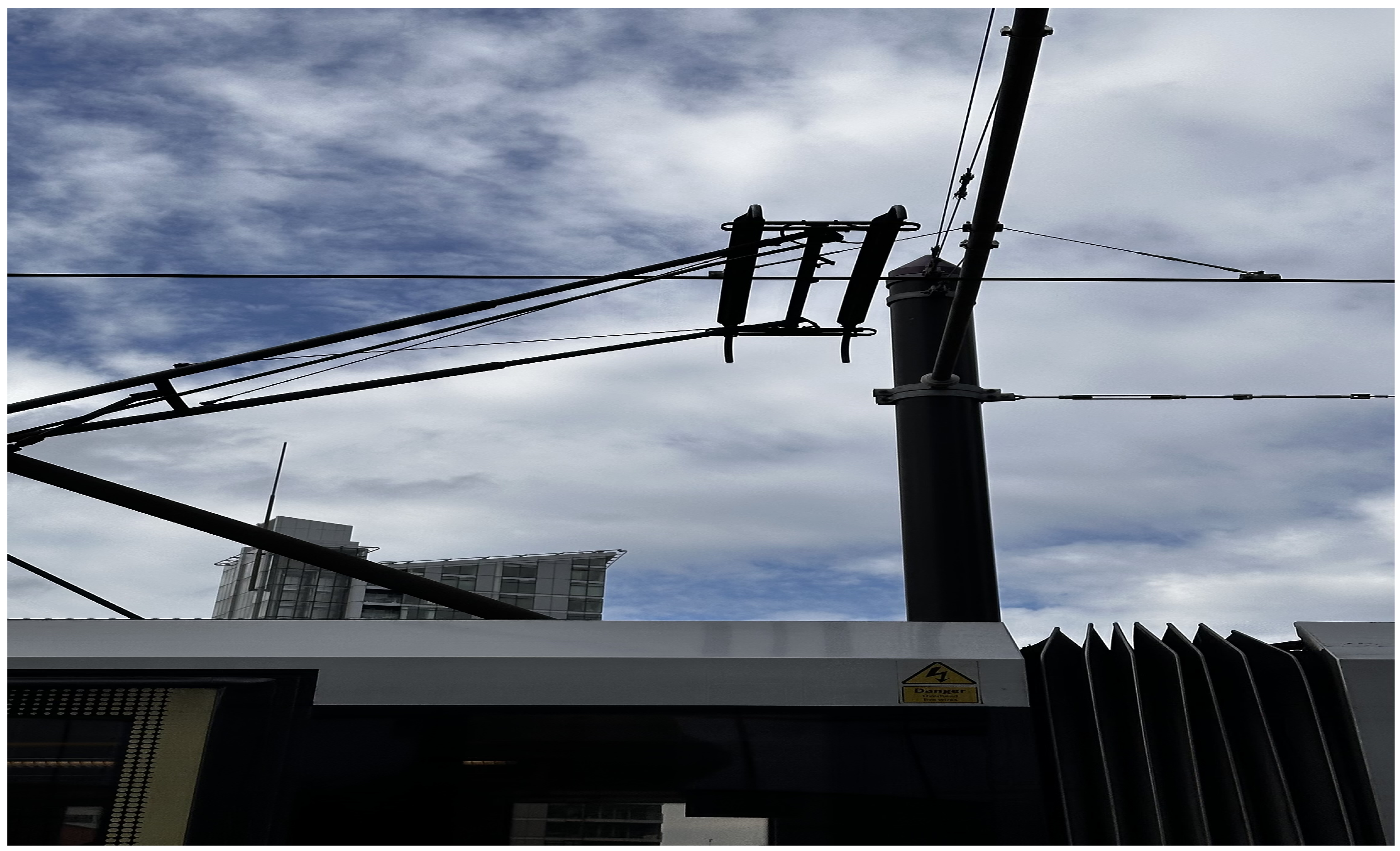

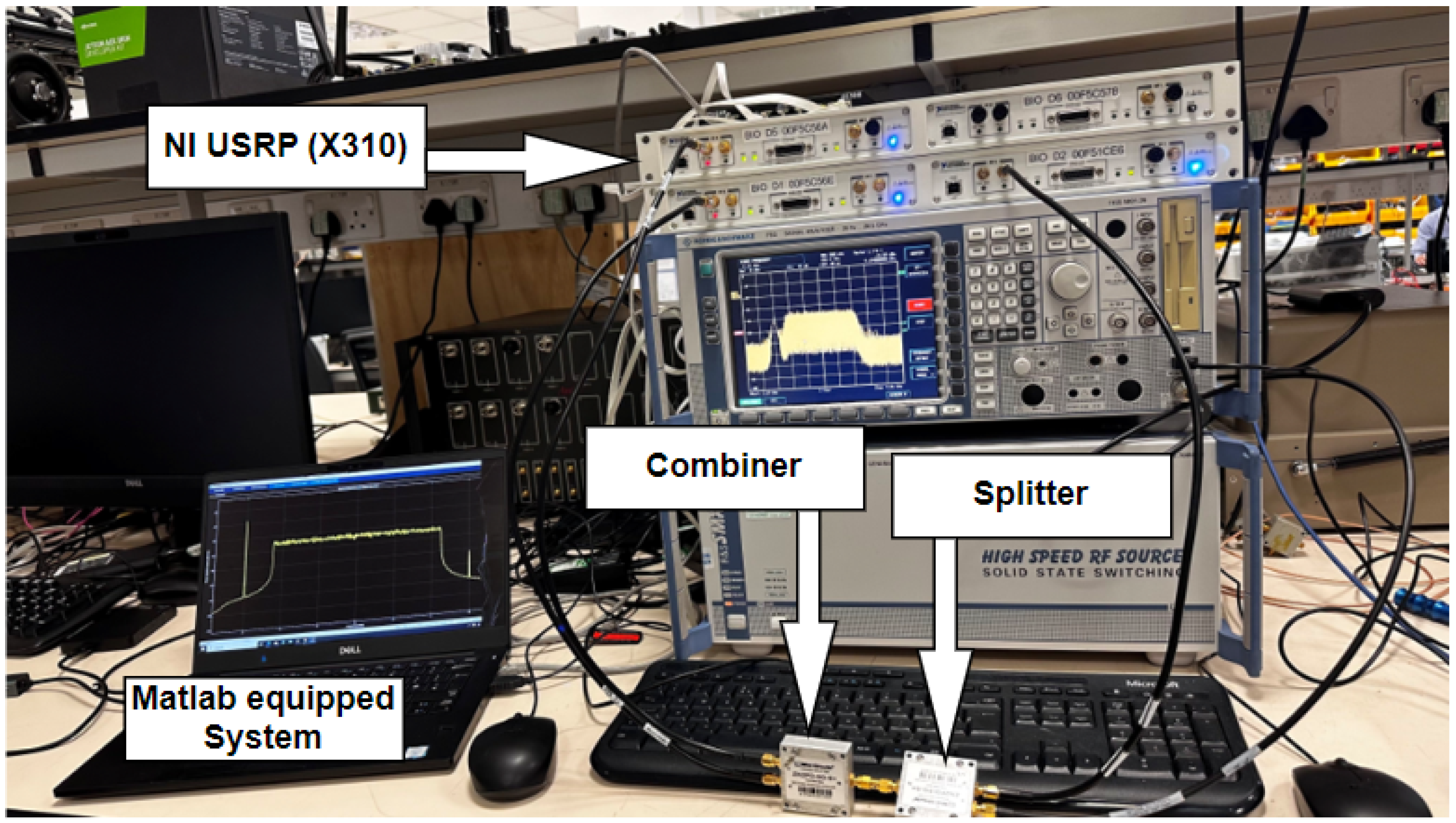

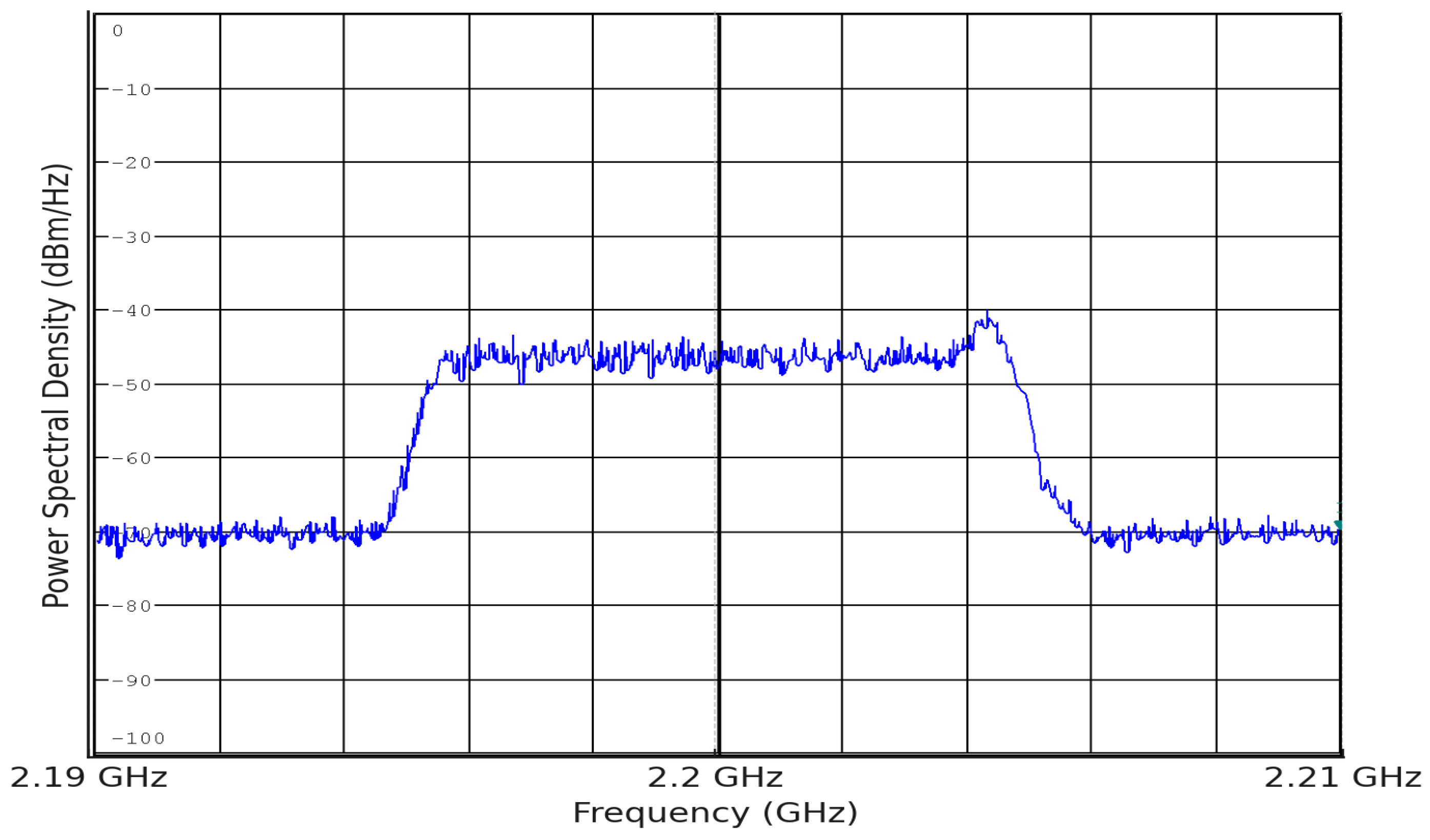
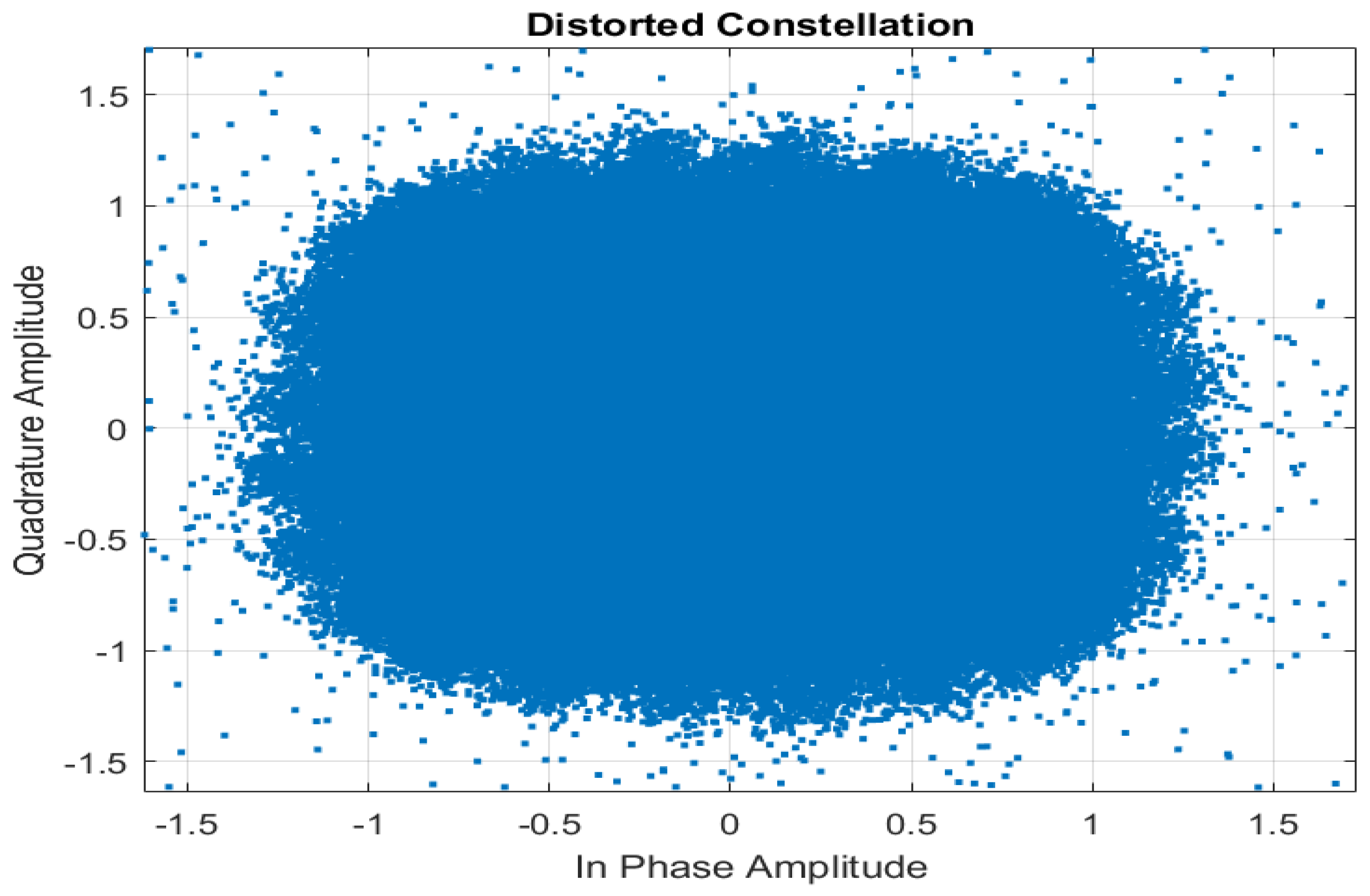



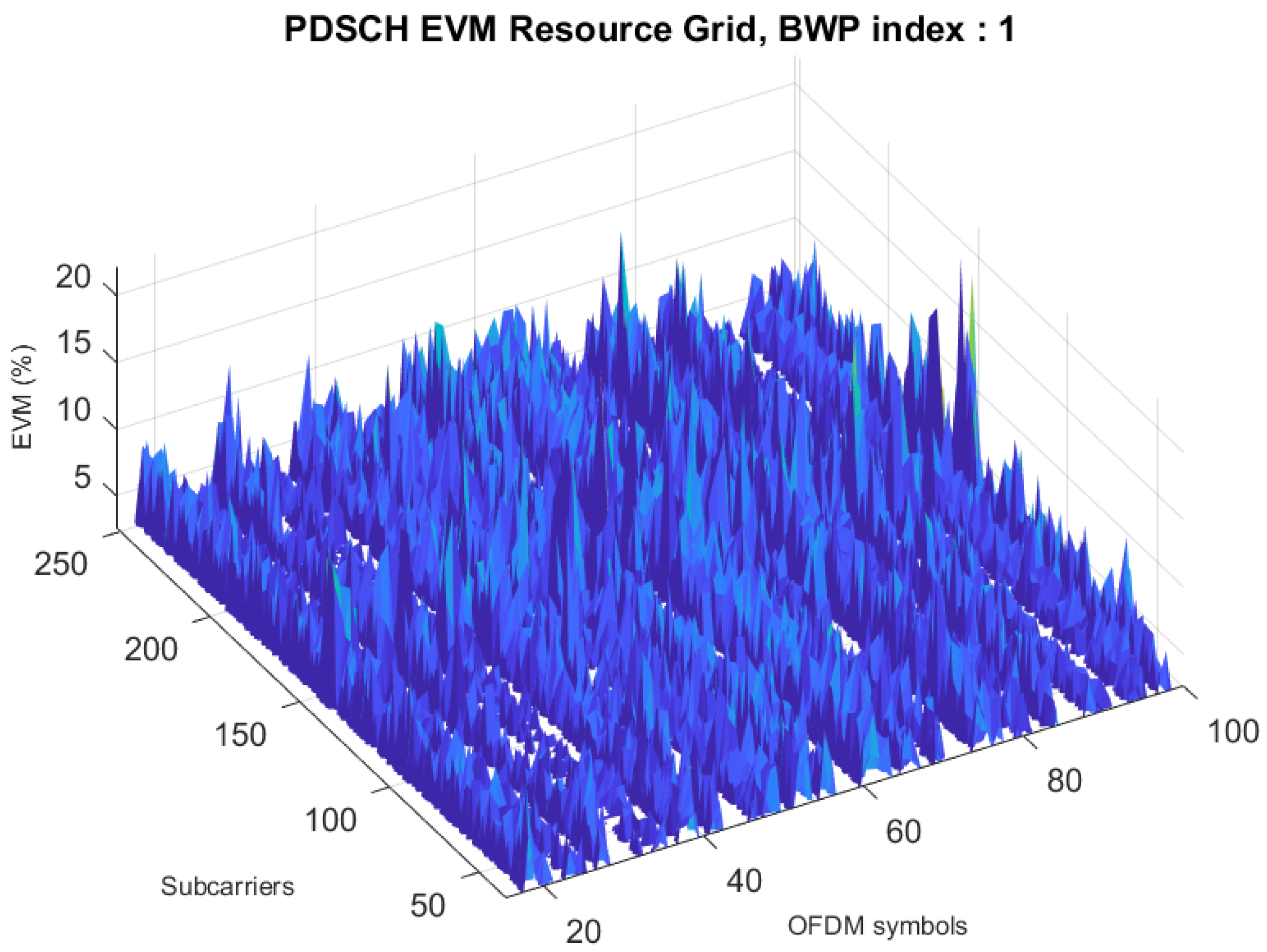
| Citation | Key Idea | Impact |
|---|---|---|
| [3] | Jamming attacks in electrified railway environments. | Narrowband jammers have lethal and prolonged effects on communication links compared to UWB jammers. |
| [4] | Leveraging Bidirectional Long Short-Term Memory (BiLSTM) networks for sequential pattern learning and interference mitigation. | The BiLSTM-based model efficiently processes time-series signals, enabling real-time detection and classification with a 93.4% accuracy, surpassing previous approaches. |
| [5,6] | Analysed OFDM signal vulnerability and the impact of interference parameters on communication degradation, considering reception-stage signal processing. | The study showed that interference depends on the sweep period and receiver’s time window. A longer observation window reduces the impact, affecting fewer subcarriers. Adjusting the window minimises interference. |
| [7,8] | Transient EMI generated by catenary and pantograph contact impacts the LTE link. | The peak-to-average power ratio (PAPR) evaluation metric is proposed instead of the EVM because the EVM breaks down when the value exceeds 17.5%. |
| [9] | Susceptibility study of an IEEE 802.11n network in a railway electromagnetic (EM) environment. | There is a direct relationship between the interference power, its duration, and the highest average power measured by the Clear Channel Assessment (CCA), which affects the BER. |
| [10] | Analysed antenna performance for four railway communication systems (TETRA at 380 MHz, GSM-R at 900 MHz, LTE-R at 2.6 GHz, and BBRS at 5.9 GHz) under the influence of the pantograph and catenary. | The omnidirectional behaviour of the antenna was lost due to the presence of loose contact between the pantograph and catenary. |
| [11,12] | Developed a test system for EMI caused by high-voltage discharge in a pantograph–catenary system. | Electromagnetic disturbances from loose catenary–pantograph contact increase with higher voltage, intensifying impulse radiation. |
| This article | Developed a system to test interference in LTE-A/5G-NR systems using USRPs. | 5G-NR is susceptible to interference from transient EMI. |
| Parameter | Value |
|---|---|
| Base RMC Configuration | R.7 (10 MHz) |
| Jammer Sampling Rate | 15.36 MHz |
| Power Scale Factor | 0.8 |
| Jammer Radio Gain | 2 dB |
| eNodeB (TX) Radio Gain | 25 dB |
| UE (RX) Radio Gain | 20 dB |
| Center Frequency | 2.2 GHz |
| EVM Peak | 17.771% |
| EVM RMS | 5.049% |
| BER | 0 |
| Frequency Offset | 1372.998 Hz |
| Parameter | Value |
|---|---|
| Frequency Range | 410 MHz–7.125 GHz |
| Modulation Coding Scheme | 64-QAM, R = 3/4 |
| Channel Bandwidth | 10 MHz |
| Sampling Rate | 15.36 MHz |
| TX Radio Gain | 20 dB |
| RX Radio Gain | 20 dB |
| Jammer Radio Gain | 2 dB |
| Center Frequency | 2.2 GHz |
| Subcarrier Spacing | 30 kHz |
| Interferer Frequency | EVM Peak (%) | EVM RMS (%) | BER | Frequency Offset (Hz) | SINR (dB) |
|---|---|---|---|---|---|
| 2.1955 GHz | 829.12 | 79.212 | 0.24165 | 1680.86 | 1.89 |
| 2.2 GHz | 1985.256 | 85.549 | 0.32059 | 2132.578 | 4.5046 |
| 2.2045 GHz | 1387.908 | 83.565 | 0.26159 | 2082.8 | −0.2355 |
| Interferer Frequency | EVM Peak (%) | EVM RMS (%) | BER | SINR (dB) |
|---|---|---|---|---|
| 2.1955 GHz | 389,223.16 | 3201.15 | 0.3214 | 3.52 |
| 2.2 GHz | 107,336.92 | 1774.27 | 0.3884 | −12.67 |
| 2.2045 GHz | 285,892.70 | 2446.83 | 0.3503 | −3.64 |
| Interferer Type | EVM Peak (%) | BER (%) | SINR (dB) |
|---|---|---|---|
| LTE-A Link (No Interference) | 17.77 | 0.00 | 15.12 |
| 5G-NR Link (No Interference) | 23.76 | 0.00 | 15.97 |
| LTE-A with Transient EM Wave 1 | 1387.91 | 0.26 | −0.23 |
| 5G-NR with Transient EM Wave 2 | 107,336.97 | 0.39 | −12.67 |
Disclaimer/Publisher’s Note: The statements, opinions and data contained in all publications are solely those of the individual author(s) and contributor(s) and not of MDPI and/or the editor(s). MDPI and/or the editor(s) disclaim responsibility for any injury to people or property resulting from any ideas, methods, instructions or products referred to in the content. |
© 2025 by the authors. Licensee MDPI, Basel, Switzerland. This article is an open access article distributed under the terms and conditions of the Creative Commons Attribution (CC BY) license (https://creativecommons.org/licenses/by/4.0/).
Share and Cite
Saleem, S.; Lodro, M. Resilience of LTE-A/5G-NR Links Against Transient Electromagnetic Interference. Magnetism 2025, 5, 10. https://doi.org/10.3390/magnetism5020010
Saleem S, Lodro M. Resilience of LTE-A/5G-NR Links Against Transient Electromagnetic Interference. Magnetism. 2025; 5(2):10. https://doi.org/10.3390/magnetism5020010
Chicago/Turabian StyleSaleem, Sharzeel, and Mir Lodro. 2025. "Resilience of LTE-A/5G-NR Links Against Transient Electromagnetic Interference" Magnetism 5, no. 2: 10. https://doi.org/10.3390/magnetism5020010
APA StyleSaleem, S., & Lodro, M. (2025). Resilience of LTE-A/5G-NR Links Against Transient Electromagnetic Interference. Magnetism, 5(2), 10. https://doi.org/10.3390/magnetism5020010






